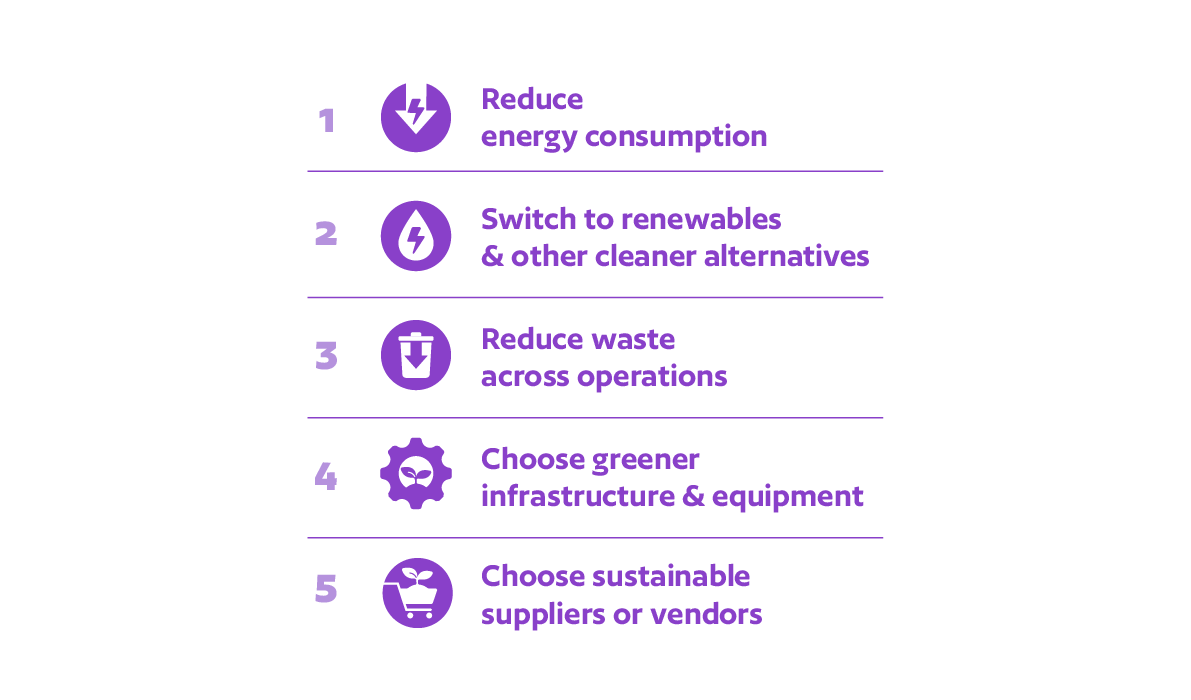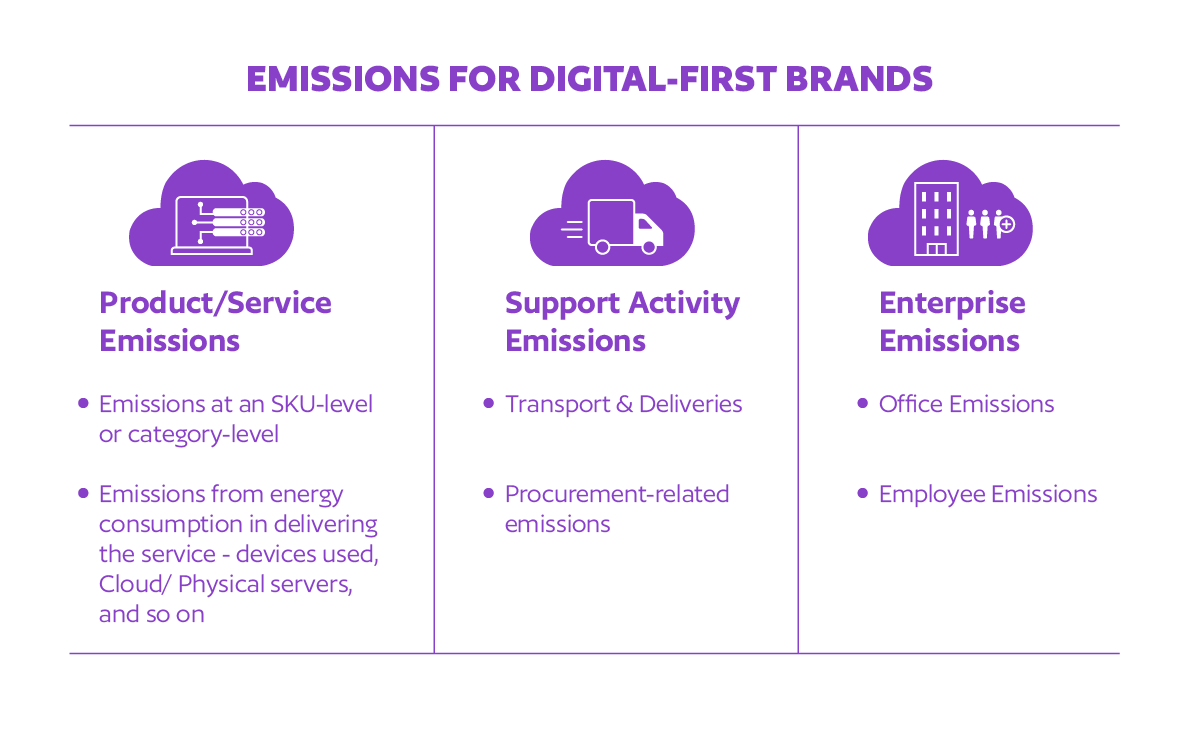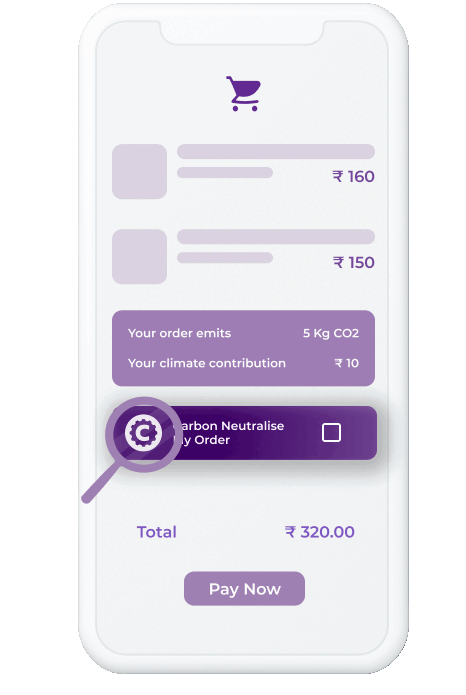Consumers Brands and Climate Action

We get it. Climate action means all sorts of things, and is an abstract term that is all-encompassing. Should a brand want to take climate action, where do they start?
Here is a quick climate starter pack:

You must have noted that all the options listed above are a means to manage your brand's emissions intensity. In other words, brands can take climate action by measuring and managing their emissions.
There is a reason we say manage emissions. Because, let's face it - despite best efforts, it is impossible to completely eliminate emissions.
And did we tell you that you can start your journey towards becoming a climate-friendly brand at zero-cost? More on this later.
Before that, let us understand what we mean by emissions and how we categorise them.
Emissions 101
Thankfully, we do not have to reinvent the wheel when it comes to categorising emissions. There is a standardised framework to do so:

Scope 1 refers to direct emissions from a brand's own activities;
Scope 2 refers to emissions from the production of purchased energy, and
Scope 3 (the gnarliest them of all) refers to emissions from activities along the value chain - both upstream and downstream
This may not be a straightforward framework if you are a digital-first business.
Don't worry, we have your back.
Emissions for Digital-First Brands
We came up with a quick categorisation that helps online brands to classify sources of emissions better.

Now that we understand how online brands can systematically classify their sources of emissions, the next step is to actually estimate emissions.
"Do minimal harm on the planet" with Climes
Climes can help you accurately estimate your emissions based on two sets of parameters: those that are specific to your industry, and those that are unique to your brand.
- For every industry: standardised emission factors that we have put together from leading academic research; think of them as fixed conversion rates
- For every brand: a personalised emissions profile, based on factors unique to the brand's operations
Let us take an example - An online brand selling T-shirts
If you are a fashion brand and want to estimate the carbon footprint of your best-selling T-Shirt or any other SKU, we would need something along the following lines:
Scenario 1: If you make your own t-shirts, we can use the standardised emissions value for t-shirt manufacturing - 'x' kg of CO2e per t-shirt produced
Alternatively, we can calculate emissions specific to your manufacturing process through the following
- Emissions from energy used in manufacturing
- Emissions from the production of fabric and other materials
- Emissions from other inputs into the manufacturing process (Eg: catalysts, etc.)
- Emissions from transporting materials and inputs from supplier to production site
- Emissions from transporting finished t-shirts to retailers or customers
Scenario 2: If you only sell t-shirts, we can use the standardised emissions value for t-shirt manufacturing, along with emissions for transporting materials from distributors or to customers.
That's it! We just helped you measure your emissions.
Climate action at zero-cost
The best part about partnering with Climes is that we deploy our tech-stack to help you take climate action, at zero-cost. Your customers will pay anywhere between 1% and 5% of their order value to neutralise the emissions associated with their purchase.
We deploy dynamic and scaleable APIs that integrate seamlessly with your mobile and web apps. We generate order-level emissions and a corresponding ₹ value to neutralise the emissions in milliseconds. Seamless and without disrupting the user flow.

With this, you have taken that huge first step towards becoming a climate-friendly brand.
8 Reasons to go climate-friendly with Climes
- Consumers love it
- It's free; customers pay a nominal 1-5% of their total order value for neutralising their order (For eg: the emissions of a passenger taking a 10 hour bus journey is around ₹6)
- Individual consumers will be able to see their order-level emissions, and be given the choice to neutralise it with Climes
- It's great for branding, and enables partner companies to become India's first climate-positive platforms within their categories
- Allows brands to see which of their users are climate-conscious (for any future sustainability initiative's cohort rollouts)
- Gives brands total carbon mitigated data via their brand
- It's easy to integrate (end-to-end integration and rollout within a week)
- Did we say, consumers love it?
In summary, here are the three steps for brands to take climate action:

If you are a consumer brand and would like to use our APIs to give your customers the choice to take climate action, we got you covered.
You don't have to take our word for how easy it is to integrate with us. Show this to your developers, and they will tell you the rest of the story - API documents
Get in touch with us today!

